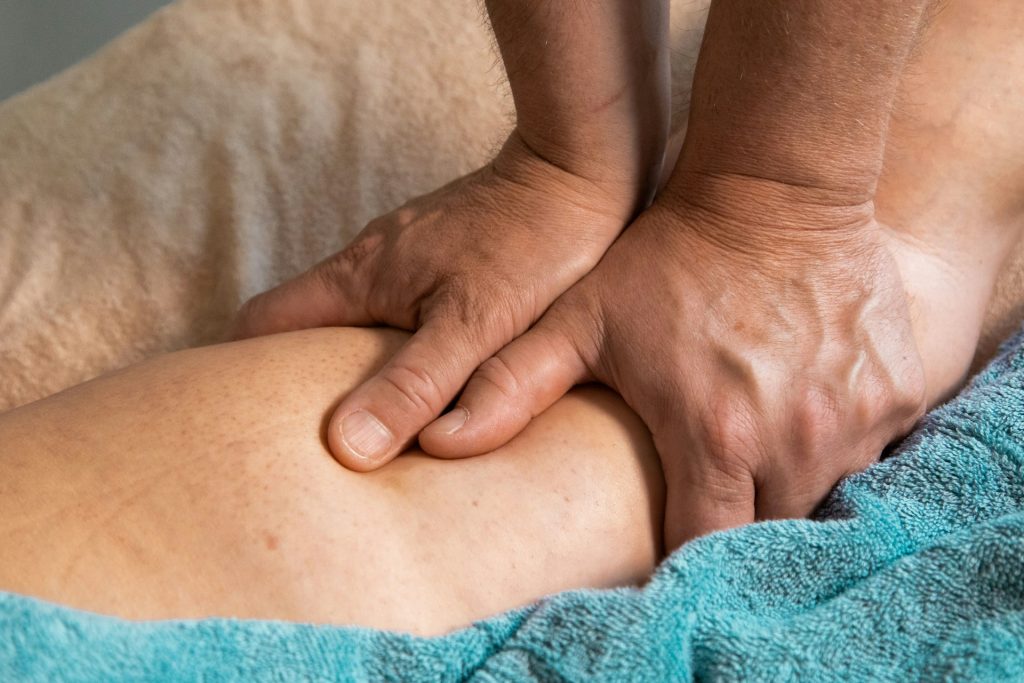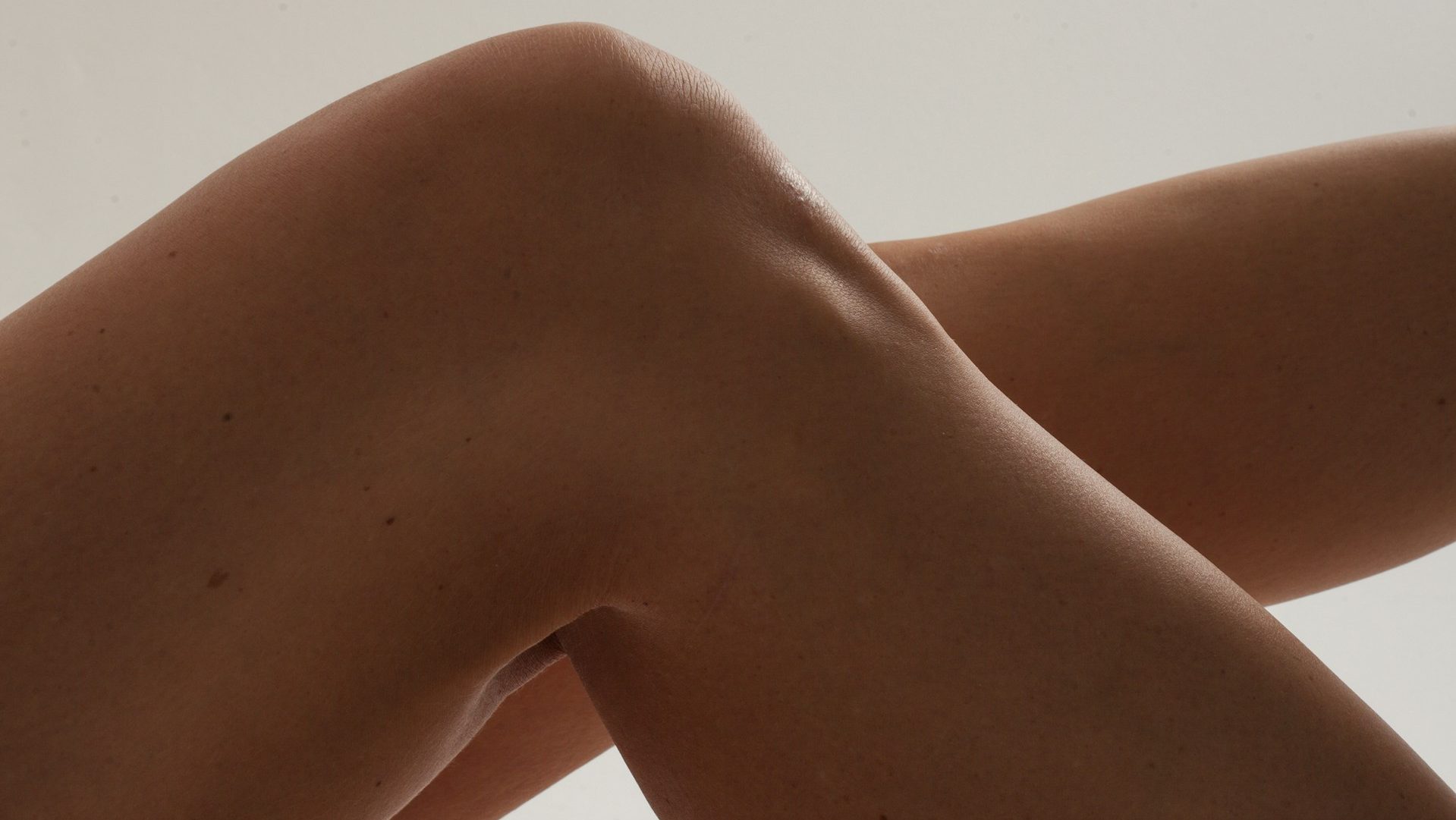RICE therapy is a trusted approach to managing knee injuries by targeting blood vessels, reducing pain and inflammation, and improving blood flow to the injured area. The RICE method for the knee is a cornerstone of initial injury care, promoting healing and mitigating further damage to the knee.
RICE stands for Rest, Ice, Compression, and Elevation and is a protocol designed to relieve pain, protect the injured area, and wrap the sore area with an elastic bandage to reduce swelling.
Key Takeaways
● RICE stands for rest, ice, compression, and elevation
● The RICE method works for most types of muscular injuries like sprains.
● The RICE method works best immediately after sustaining an injury.
How RICE Works
● Rest
Rest is crucial, especially within the first 24 to 48 hours post-injury. It’s crucial to avoid placing weight on the injured knee to prevent exacerbating the injury and allow for recovery.
● Ice
Applying ice to the knee helps control swelling and provides pain relief. The cold temperature constricts blood vessels and numbs the painful area, aiding pain management.
● Compression
Compression using a bandage or brace can relieve pain and further limit swelling. It provides support and helps maintain the alignment of the knee structures during the healing process.
● Elevation
Elevating the knee above heart level enhances circulation, reduces inflammation, and helps decrease swelling. This position assists in draining excess fluid from the injured area.

When to Apply the RICE Method for Knee Pain
The RICE method is effective for managing blood vessels’ reactions to injuries, alleviating pain and inflammation, and optimizing blood flow to the injured knee. Rice therapy is best applied soon after injury to maximize benefits.
RICE treatment is effective for a range of musculoskeletal injuries including muscle strains, joint pain, and joint stiffness. It’s best suited for acute injuries like a sprain or strain, where compression wraps can speed up healing and reduce knee pain. Elevate the injured body part, especially within the first 48 to 72 hours, to maximize the effectiveness of the treatment.
Acute knee injuries, characterized by sudden pain and swelling, often benefit from the RICE method, whereas chronic conditions, involving prolonged discomfort, may require a different approach.
Step-By-Step Application of the RICE Method
The RICE method is a straightforward protocol for treating minor injuries. Apply a cold compress, rest, and elevate the injury to manage symptoms and facilitate healing.
● Initiate care by resting the knee, and avoiding weight on the injured joint for 24 to 48 hours to prevent increased inflammation and mitigate pain or soreness.
● Apply ice to the knee in intervals, ensuring not to leave it on the skin for too long to avoid frostbite and other tissue damage.
● Selecting an appropriate ace bandage is key; it should be snug but not wrapped too tightly to not cut off circulation. If increased pain or swelling occurs, a problem may be present, necessitating a change in compression.
● Elevating the injured limb encourages the drainage of fluids, reduces pain, and helps minimize swelling. It’s most effective when the knee is above the level of the heart.
The Benefits of Using the RICE Method for Recovery
The RICE method is a cornerstone among recovery methods, particularly for minor injuries. By reducing swelling in the injured area, RICE facilitates quicker healing times. Icing an injury, one of the method’s components is essential in controlling inflammation and providing pain relief, thereby accelerating the recovery process.
Utilizing RICE principles can significantly shorten the length of time needed for rehabilitation. Immediate rest prevents further damage, while icing, compression, and elevation work together to manage swelling and pain. This protocol ensures that minor knee injuries recover more rapidly and effectively.
Adhering to the RICE method post-injury can lead to long-term benefits for knee health. It helps in establishing a routine that can prevent future knee injuries. Should a knee injury recur, knowing when to schedule an appointment with a medical professional becomes instinctual, promoting ongoing knee care.
Recognizing When to Escalate Care
While the RICE method is effective for minor knee injuries, it’s crucial to recognize when to seek further medical attention. Persistent pain, severe swelling, or inability to bear weight might indicate a more serious condition that requires professional intervention.
Furthermore, severe knee injuries may require more than the RICE method to ensure proper healing. If blood flow to the injured area is compromised, or if there is internal bleeding, medically reviewed intervention is necessary. Moreover, if tissue damage is extensive, professional care is imperative to promote flexibility and healing.
Acute injuries that result in significant pain, swelling, or joint instability are red flags mandating medical evaluation. If symptoms persist or worsen despite applying the RICE method, it’s vital to seek medical advice to prevent further damage and ensure appropriate treatment.

Expert Insights on RICE Method Efficacy
Experts acknowledge the RICE method as an effective initial treatment for treating minor injuries. Applying a cold compress and elevating the injury are especially beneficial steps in managing acute symptoms and facilitating the healing of soft tissues.
While the RICE method remains a widely accepted treatment, some professionals debate its efficacy in comparison to newer protocols. Emerging research and patient outcomes continue to shape the conversation around the most effective practices for injury recovery.
Alternative protocols like PRICE, POLICE, and MCE are gaining attention for their potential to enhance the healing process. These methods include additional steps like protection and optimal loading, which might improve the flow of blood and allow individuals to return to daily activities more swiftly.
Holistic Approach to Knee Injury Care
Adopting a holistic approach to knee injury care includes using the RICE method in conjunction with lifestyle changes and professional guidance. This approach ensures comprehensive care, allowing individuals to return to normal activities with a stronger, healthier knee.
Complementing the RICE method with lifestyle adjustments can improve outcomes for those treating minor injuries. These modifications may include dietary changes, weight management, and avoidance of activities that could exacerbate the injury.
Furthermore, incorporating physical therapy and targeted exercises after the initial phase of the RICE method can further enhance knee recovery. These activities are designed to restore strength and mobility, reducing the risk of future injury.
Frequently Asked Questions
1. What is the RICE method?
The RICE method is a common treatment approach to minor injuries such as joint pain. It involves resting the injured area, icing it, applying compression, and elevating the injured area.
2. Is the RICE method effective?
The RICE method is a tried and trusted method of pain relief for minor injuries such as sprains, strains, bruises, or joint pain.
3. Can I RICE a fracture?
The RICE method is not guaranteed to be effective for anything that is a major injury, including fractures, tears, or broken bones. In such cases, visit a medical professional.
Concluding Thoughts on the RICE Method for Knee Recovery
The RICE method for the knee is a trusted first-aid response for managing minor knee injuries. While it is highly effective for ankle sprains and similar traumas, its simplicity allows for early intervention. Utilizing this protocol, individuals can alleviate swelling and pain, which are common symptoms of sprained ankles. However, the RICE method is not a one-size-fits-all solution and should be considered a component of a broader treatment plan.
RICE therapy is a foundational approach to treating acute injuries, with ice or cold pack applications being pivotal for reducing inflammation. When wrapping the injured or sore area, it’s essential to ensure that ice or heat is used appropriately to avoid further tissue damage. The method’s limitations must be acknowledged, particularly when dealing with more complex injuries that require professional medical assessment.
Effective management of knee injuries extends beyond RICE, addressing increased pain and the complexities of the injured joint. A comprehensive treatment plan may include a variety of treatment options, from pain medication for reducing pain to physical therapy for long-term recovery.
